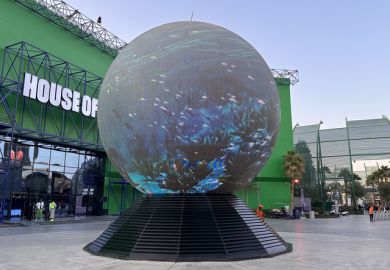The German artist Kurt Schwitters was a canny crusader who aligned himself with international Dadaism, yet insisted on waving his personal banner. His contribution to the avant-garde of the 1920s consisted of daft poetry and peremptory tracts, alongside anarchic collages made of scraps of litter arranged in inscrutable disorder. Invoking the watchword MERZ – a nonsense fragment snipped from the lengthy name of a respectable Hanover bank – Schwitters fought a solo campaign to force a salutary medicine down the throat of contemporary culture.
Although many thought him an eccentric fool, Schwitters amassed astonishing piles of paper-based collages and extended his output to three dimensions through assemblages of metal junk and scrap wood, nailed down within a frame to create hermetic alcoves. Many of his early writings comprised quite cerebral arguments about the principle of non-mimetic abstraction, which he sought to reconcile with his collage aesthetic, thereby fusing a sober Constructivism with a quirky offshoot of Cubism. Yet, while exhibiting and agitating alongside other European avant-gardists (including Jean Arp, El Lissitzky and Piet Mondrian), he was secretly creating a unique masterwork in his Hanover studio, hidden away at the back of an unassuming house in a quiet suburb. This was in due course revealed to be an architectural wonder; a piece of non-pictorial, non-realistic art that the beholder could walk inside, and thus a tradition-denying experiment in what he called “radiating space”. This was the Merzbau, a one-off breakthrough in the history of Modernism.
Schwitters’ capricious art was anathema to the Nazis, who displayed it in the notorious travelling display Entartete Kunst (Degenerate Art) intended to ridicule and stamp out art that the regime saw as cultural pollution. Megan Luke’s energetic study homes in on the decisive moment when Schwitters hurried off to Norway in early 1937 to escape the impending Gestapo knock on the door. He foolishly thought the danger might blow over, but instead found he had opted for permanent exile: it was to extend to his death in northern England in 1948.
Luke’s book offers a refreshing critical perspective on the exile years, which have often been seen in terms of a slump in the artist’s inventiveness, paralleled in his physical decline amid circumstances of privation and poor health. Having scrutinised Schwitters’ pre-exile writings, she argues that the artist’s efforts to synthesise collage and abstraction were not only sustained into his final years but generated works of unexpected equilibrium and robustness. Tragically, the legendary Merzbau was obliterated in an Allied air raid in 1943, yet Luke judges it to have been the guiding paradigm for Schwitters’ late output, within which she identifies several instances of its reincarnation in truncated form, not to mention its echoes in tiny polychrome sculptures that defy simple analysis. Her close attention to such works brings weight and impetus to her monograph, despite the fact that its final pages stutter to a halt as she arrives at the brute fact that the so-called Merzbarn, which Schwitters began to construct in the last months of his life, remains an incomplete fragment.
Nevertheless, Luke achieves a lucid reappraisal of the work of exile and even succeeds in rehabilitating the artist’s paintings of Norwegian snowscapes, which are often dismissed as irrelevant kitsch. Schwitters may have died in frustration, but his resourceful spirit remains exemplary.
Kurt Schwitters: Space, Image, Exile
By Megan R. Luke
University of Chicago Press, 352pp, £38.50
ISBN 9780226085180 and 090375 (e-book)
Published 7 April 2014
Register to continue
Why register?
- Registration is free and only takes a moment
- Once registered, you can read 3 articles a month
- Sign up for our newsletter
Subscribe
Or subscribe for unlimited access to:
- Unlimited access to news, views, insights & reviews
- Digital editions
- Digital access to THE’s university and college rankings analysis
Already registered or a current subscriber?





